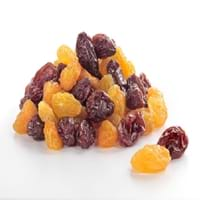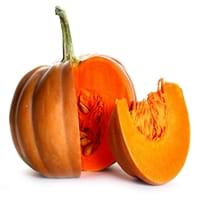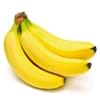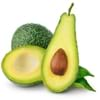Health Benefits
Acidity treatment, Cancer prevention, Good for diabetics, Prevents constipation, Prevents Anaemia
Arthritis treatment, Cancer prevention, High Cholesterol Regulation, Lower blood pressure, Helps Prevent cataract, Prevents gall stones, Ulcer treatment, Weight loss properties
General Benefits
Boosts immune system, Cures fever, Eye care, Fights against infections, Strengthens bones
Boosts respiratory health, Eliminate parasites and infections, Protects against birth defects, Strengthens bones
Skin Benefits
Anti-aging benefits, Reduces wrinkles, Skin rejuvenation
Heals sunburn, Hydrates skin, Skin rejuvenation
Hair Benefits
Protects hair
Regulates hair growth
Allergy Symptoms
Anaphylaxis, Asthma, Breathing difficulty, Coughing, Drop in blood pressure, Hives, Skin rash, Stuffy nose, Swelling of mouth, tongue or lips, Wheezing
Abdominal cramps, Anaphylaxis, Digestive Problems, Dizziness, Eczema, Fainting, Hives, Inflammation, Itching, Tingling sensation in wrist and face, Vomiting, Wheezing
Side Effects
Allergic reaction
Kidney and gallbladder diseases
Lactating Women
Not Available
Yes
Best Time to Eat
Any time except an hour after meal
Along with meal, Don't eat after meal, Morning time (before lunch)
Vitamin B5 (Pantothenic Acid)
Vitamin C (Ascorbic Acid)
Vitamin K (Phyllochinone)
Phytosterol
Not Available
Calories in Fresh Fruit with Peel
Calories in Fresh Fruit without Peel
Not Available
Calories in Frozen Form
Not Available
Not Available
Calories in Dried Form
Not Available
Not Available
Calories in Canned Form
Not Available
Season
All seasons
All seasons
Varieties
Dark raisins, White or golden raisins, Sultanas and Currants
Jarrahdale, Peanut, Lakota, Cow, Sugar, Caribean, Red kuri, Buttercup and Pink lady
Seedless Variety
Not Available
Yes
Color
Black, Blue, Green, Purple, Yellow
Blue, Green, Orange, Red, White
Inside Color
Brown
Creamy Yellow
Taste
Sweet
Creamy, Soft, Sweet
Origin
Central Europe, Western Asia
Mexico
Grows on
Not Available
Vines
Soil Type
Clay loam, Sandy loam
Clay loam, Sandy loam, Well-drained
Climatic Conditions
Warm
Warm to hot climate
Facts about
- 30th April is known as National Raisin Day.
- Fresno, California is known as raisin capital of the world.
- Half of world's raisin supply is produced in California.
- The name pumpkin has its roots in the Greek word ‘pepon’, meaning ‘large melon’.
- The largest pumpkin ever grown weighed 1,140 pounds.
- Pumpkins were once known for removing freckles & curing snake bites.
Top Producer
United States of America
China
Other Countries
Afghanistan, Argentina, Australia, Chile, China, Iran, South Africa, Turkey, Uzbekistan
Egypt, India, Indonesia, Iran, Italy, Mexico, Russia, Spain, United States of America
Top Importer
Europe
United States of America
Top Exporter
Turkey
China
Botanical Name
Vitis Vinifera
Cucurbita maxima
Synonym
Not Available
Cucurbita pepo, Squash
Subkingdom
Tracheobionta
Tracheobionta
Division
Magnoliophyta
Magnoliophyta
Class
Magnoliopsida
Magnoliopsida
Subclass
Not Available
Dillenhidae
Order
Vitales
Cucurbitales
Family
Vitaceae
Cucurbitaceae
Species
Vitis vinifera
Cucurbita mixta
Generic Group
Grape
Not Available
Compare Raisin and Pumpkin
It is important compare Raisin and Pumpkin as both the fruits have a different nutritional value. Their comparison can be done on the basis of their vitamin and mineral content, calories, benefits as well as characteristics, making it easier for us to choose the best fruit for our diet. Their general health benefits are as follows:
Raisin Benefits: boosts immune system, cures fever, eye care, fights against infections and strengthens bones.
Pumpkin Benefits: boosts respiratory health, eliminate parasites and infections, protects against birth defects and strengthens bones.
Fruits are also used as a remedy for various hair problems. The hair benefits of Raisin are: protects hair and hair benefits of Pumpkin are: regulates hair growth. Some fruits are known to cause allergic reactions. The allergy symptoms of first fruit are: anaphylaxis, asthma, breathing difficulty, coughing, drop in blood pressure, hives, skin rash, stuffy nose, swelling of mouth tongue or lips and wheezing and the symptoms of second fruit are: abdominal cramps, anaphylaxis, digestive problems, dizziness, eczema, fainting, hives, inflammation, itching, tingling sensation in wrist and face, vomiting and wheezing. Get sorted Raisin vs Pumpkin comparison with the help of fruit comparison tool by fruitvs.com.









